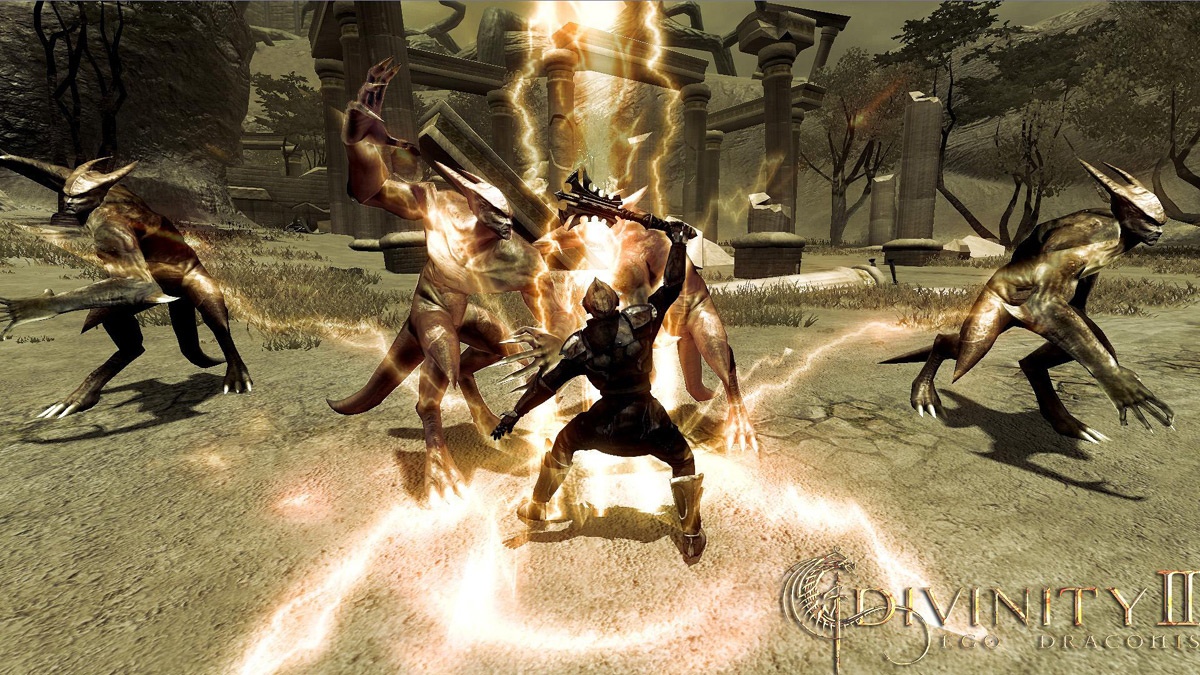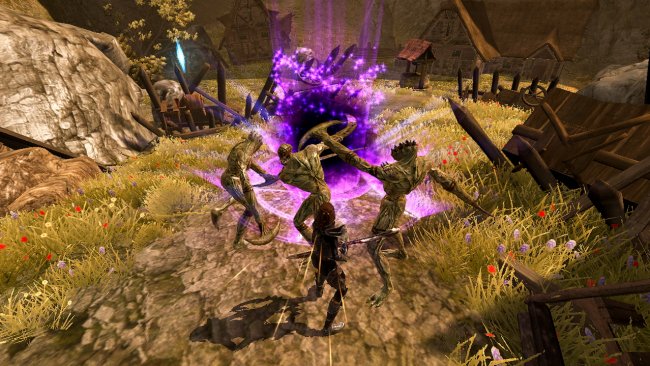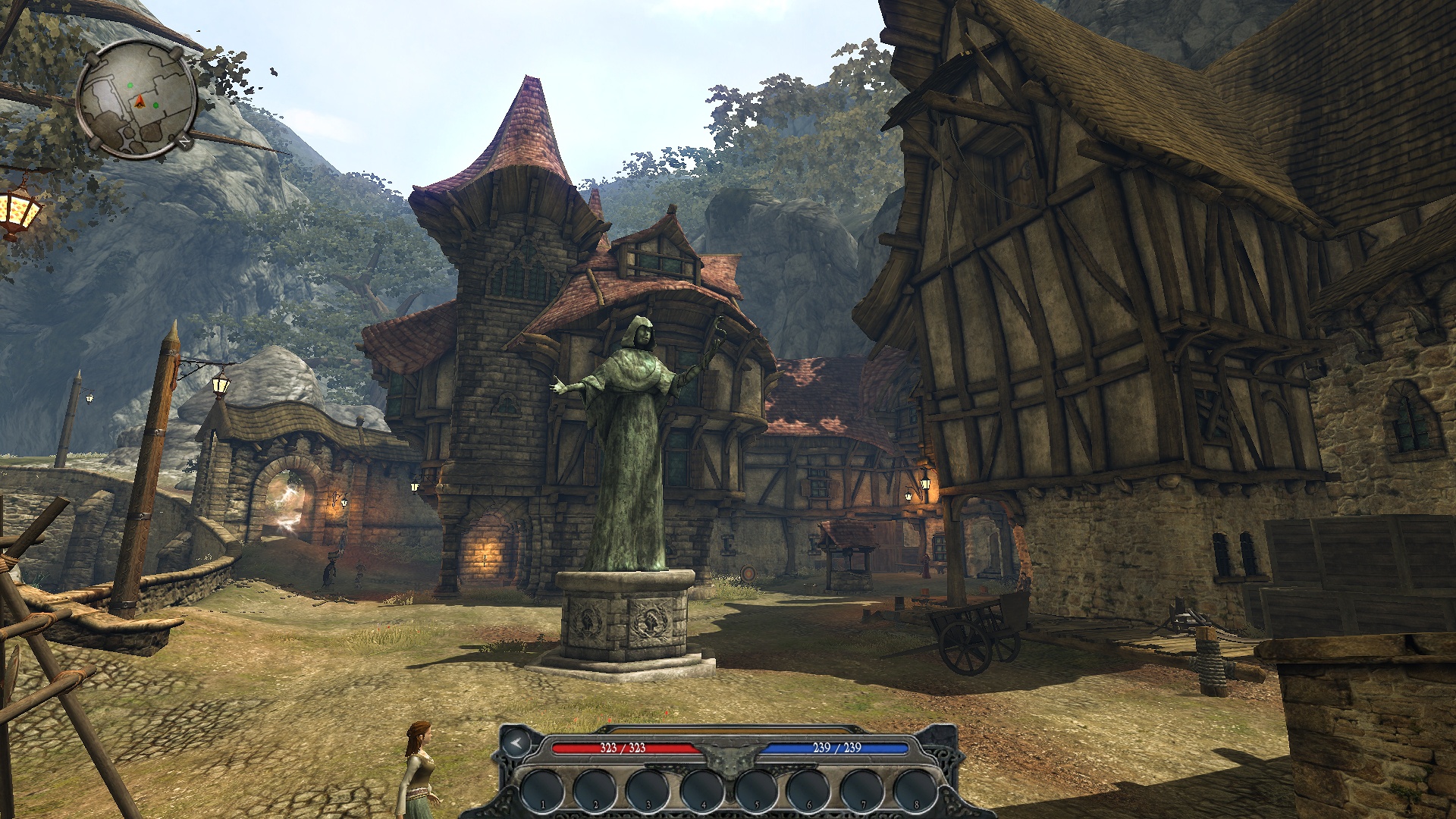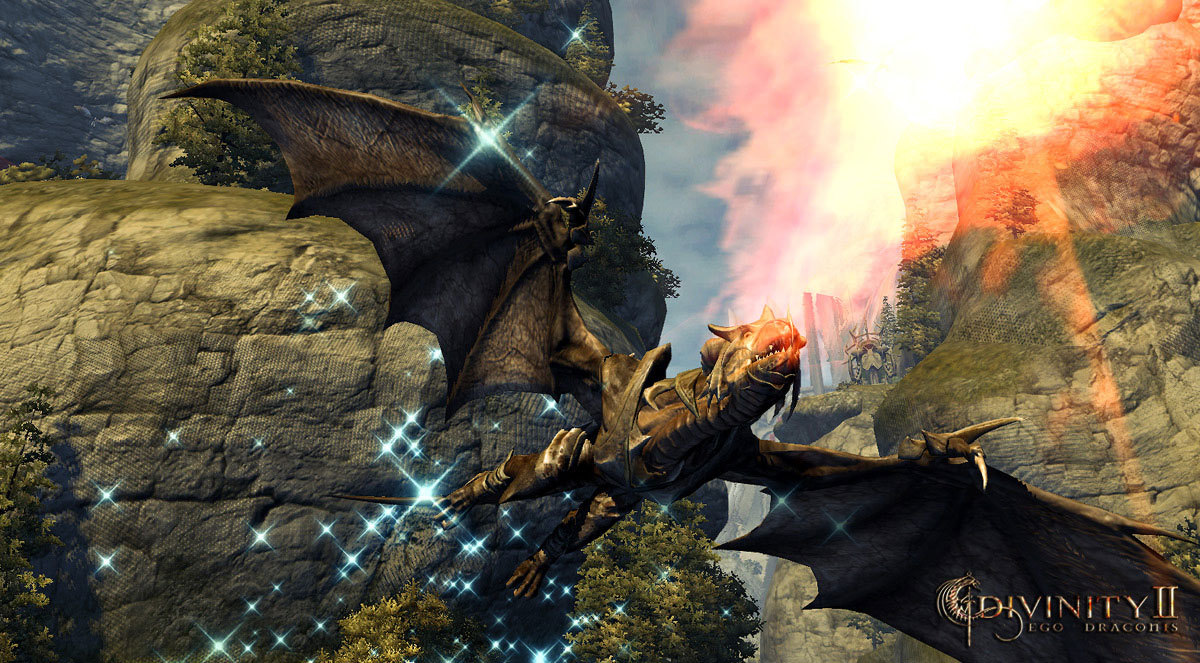The development team at Larian Studios makes excellent use of Wwise to manage thousands of lines of dialogue, localization and action sound effects for the third release in their award winning Divinity Series, Divinity II - Ego Draconis.
In October 2009, Belgium’s Larian Studios released Divinity II - Ego Draconis, an Action RPG game for the PC and Xbox360 platforms. It is the sequel to the studio’s award winning Divine Divinity and Beyond Divinity and takes fans to a whole new level of experience. In addition to including all the classic RPG features—like a strong story line and character interaction—Divinity II also gives players the unique ability to move between human and dragon form.

Divinity II returns players to Rivellon, the timeless world of magic. The wars appear to be over, but the peace is deceptive. There is dragon slaying to be done. But although players begin as Dragon Slayers, they soon discover that they can evolve into a Dragon Knight. As dragons, players have the ability to fly and reach places that are accessible only by air. But, the evolution is not a one-way path as players can also transform back into their human form.
“With its rapid iteration times, ease of integrations, and good results, Wwise is everything we need.”
—Benoît Louzas, Lead Producer, Larian Studios
This shape-shifting ability, with its associated sound effects, presented several obstacles to the team during development. According to Benoît Louzas, Lead Producer at Larian Studios, “The challenges on Divinity II included managing over 7000 files of audio dialogue per language and a lot of different effects and music.” To meet these challenges, the development team at Larian Studios turned to Audiokinetic’s audio pipeline solution, Wwise. This was not the first time that they employed Wwise. In fact, Larian Studios has been very public about using the middleware on smaller projects since 2007 and has been committed to it since the beginning. Explains Louzas, “For years, we had been looking for a complete solution that removed the coding and engineering hassles of managing audio resources. With its rapid iteration times, ease of integrations, and good results, Wwise is everything we need.”
Divinity II marks the independent studio’s first major title with Wwise, and the results are impressive to say the least.
Managing Thousands of Lines of Dialogue
One of the concerns on Divinity II, according to Xander Warnez, Gameplay programmer at Larian Studios, was “Managing the thousands of sounds that all characters can trigger through their own audio and dialogue.”
David Vink, Sound Designer on Divinity II, explains: “Since there are more than 7000 lines of dialogue in the game that are important to communicating the story and the essence of the characters, it was essential that these lines could be imported and implemented easily.”
Using Wwise made sound management easy explains Warnez: “Wwise proved to be a great help in managing sound objects. With it, getting each character to make sounds at the correct location, leading to the right attenuation and sound orientation—specifically on surround systems—was as easy as stealing candy from a baby.”
He continues: “The ease of adding our own streaming implementation gave us the required control on the disc access for viewing. And, after adding our own soundbank manager that was just a simple management layer on the Wwise soundbank system, we could upload and load soundbanks exactly when needed. What’s more, the audio memory consumption was left to a minimum.”

Localization With Wwise
In addition to helping the team manage the sounds, Wwise was also instrumental for localization. Given the importance of dialogue in any RPG game, in general, and in Divinity II, in particular, and given the fact that the game was released in English, French, Italian, German and Spanish, managing the localization for this title was an extremely important and potentially difficult task.
Says Vink, “Using Wwise definitely helped streamline the process of implementing and editing the audio. And the way that Wwise handles localization helped a lot in implementing the spoken dialogue for all of the languages.”
“The way that Wwise handles localization helped a lot in implementing the spoken dialogue for all of the languages.”
—David Vink, Sound Designer on Divinity II, Larian Studios
Although Louzas was not directly involved with the implementation of the audio, he was still able to see the benefits of using Wwise, particularly with regards to localization. He says, “As a producer, I need to be able to deliver different versions for QA, marketing, and localization. The language management in Wwise made it easy for our team to provide me with these different versions in the different languages.”

Action-Oriented Effects With Wwise
In addition to managing and localizing so much dialogue, Wwise also helped Vink realize his overall vision for the project. Originally, the sound effects on Divinity II were to be somewhat standard in their subtle and unobtrusive nature. But, given that the level of action in the game was going to be anything but typical, Vink soon changed his mind.
Says Vink, “I felt that, since the game was much more action-oriented than traditional RPGs, I wanted to have the combat sounds reflect this. I also wanted to create original sounds for some of the enemies so that they would not sound like anything players might hear in other RPG games.”
Wwise helped Vink make this happen. As he explains, “Wwise made it very easy for us to mix and randomize sounds at runtime, which allowed us to avoid having a lot of repetition in the effects. Using Wwise also made it easy for us to let the audio react to elements in the game. For example, when a player wades through water, the sound of footsteps is dynamically linked to the depth of the pool or stream. This creates a very realistic transition from shallow splashes to deep wading sounds.”
Vink also made excellent use of the Event Editor in Wwise on this project. In fact, as he explains, it is one of his favourite features: “On Divinity II, I found myself spending a lot of time with the Event Editor, doing quick iterations of setting actions to events, generating corresponding soundbanks, and testing the events in-game. Then, I could go back and add a few more milliseconds of delay to a certain sound or add an extra sound to an event to give it more impact. Thanks to the Event Editor in Wwise, it was easy to create very different sounding effects using the same sound sources. This helped to save memory, which is so important for our Xbox 360 version of the game.”
While Vink’s favourite feature is the Event Editor, Warnez singles out the Profiler. He says, “Being able to attach the Profiler to the running game—even on the Xbox 360—is a gift from above. Many times, we were able to track, analyze, and solve bugs just by looking at the Profiler output. Using the Profiler, you can track anything from the active sound objects and received events to memory usage and the position of sound objects in the 3D world.”

Audiokinetic’s Pipeline Solution
Ultimately, for the team at Larian Studios, working with Wwise goes beyond the great Event Editor and Profiler. They continue to be impressed with the whole solution. Says Louzas, “As far as I am concerned, Wwise is fast to implement, easy to learn, and gives good results. And, on top of that, it reduces the headaches associated with fighting for memory and CPU cycles. It is perfect for our next-gen titles. It offers a lot of possibilities, handles large amounts of audio files, and makes localization easy: everything you need to put your title in the AAA competition.”
“Being able to make a clear distinction between the programming of the audio functionality and the design of the audio for the game is one of the main benefits of using Wwise.”
—Xander Warnez, Gameplay Programmer, Larian Studios
According to Warnez, a key advantage of using Wwise is something that Audiokinetic has been talking about from the beginning, namely, the way that using Wwise allows programmers and designers to work independently and in tandem. Says Warnez, “Being able to make a clear distinction between the programming of the audio functionality and the design of the audio for the game is one of the main benefits of using Wwise.”
He explains, “At Larian Studios, where this was done by two individuals, this is a must. When you combine this with the easy-to-use profiler, you have a powerful tool that helps the programmer analyze the audio implementation and keep track of memory usage and that allows the sound designer to follow how the game uses the audio.”
Vink also appreciates the end results he can achieve with Wwise as well as the way the middleware helps him to achieve these results. What’s more, based on his experience on Divinity II, he hopes to continue to use Wwise. Says Vink, “I would most certainly like to work with Wwise again in the future. And, I would advise any studio working on a serious title to do the same. I think Audiokinetic has the best audio solution for game developers on the market.”
If you are not already playing Divinity II, you should definitely check it out. Divinity II - Ego Draconis is rated 12+ in Europe and is available for PC and the Xbox 360. It will be available 5th January in the US with a M age rating.


댓글